As a member of the Cultural Engagement Council at MSU, I’ve been thinking about how we might create a more coherent and integrated arts and cultural experience for students at the university.
Drawing on my experience with badging and micro credentialing at Penn State, what follows is a discussion of badges, an example of how we made use of them in the College of the Liberal Arts at Penn State, a proposal for how they might be used to create an MSU Arts and Culture Scholar badge program, and an example of how we are using badges for our College Teaching Graduate Certificate.
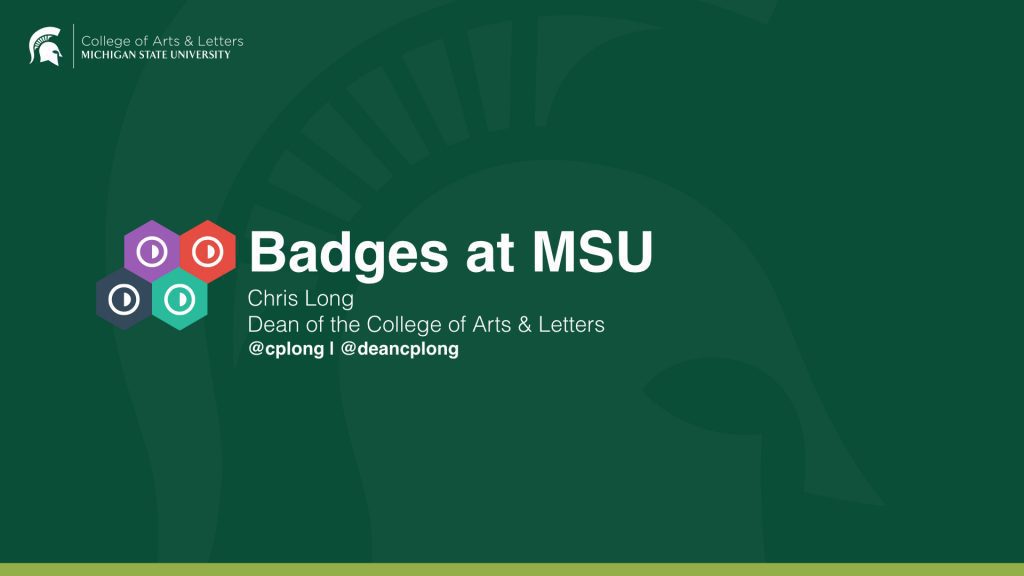
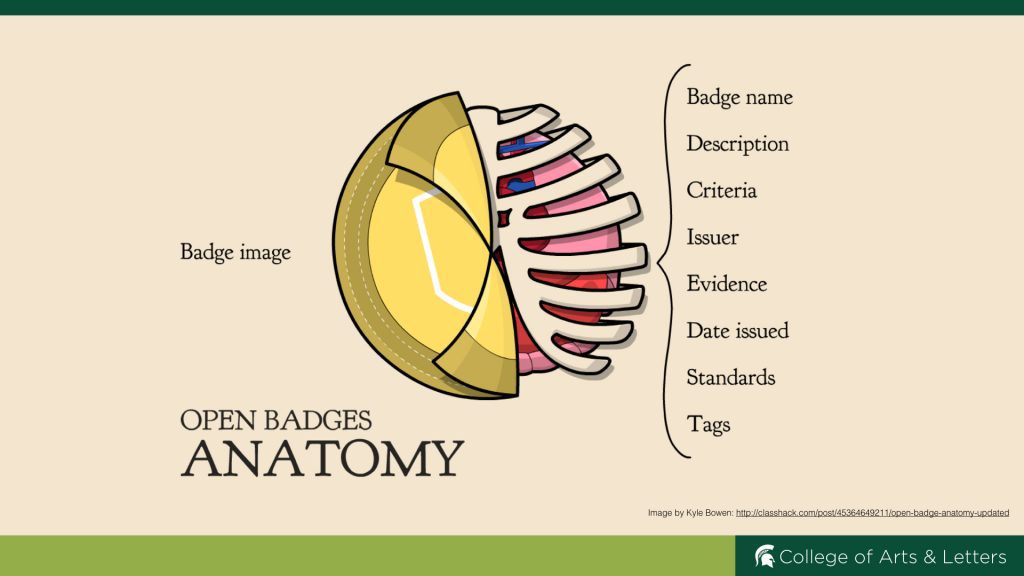
Micro credentials have surface and depth. On the surface is the image of the badge, but underneath is the meta data associated with the badge and, most interestingly, the evidence that demonstrates how the badge was earned.
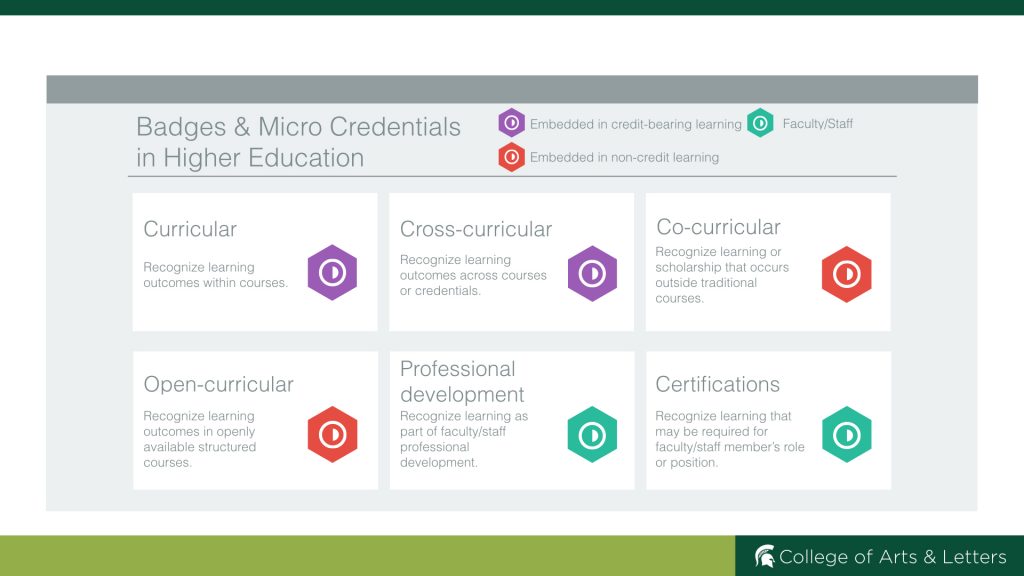
There are a variety of uses for micro credentials, ranging from curricular to cross-curricular, from professional development to certifications.

When I was Associate Dean in the College of the Liberal Arts at Penn State, we developed at Liberal Arts Citizens badge to credential students for undertaking activities associated with the virtues of the liberal arts.

There were four categories, including cultivating global perspective. One of the ways you could earn the Global Perspective was by being a “Globalist,” which we described this way: “Living abroad, whether for study or work, enables you to understand and appreciate other cultures and to see your own in a new way. Earn the Globalist badge by completing a six-week or longer study or intern abroad program.” To earn that badge, students had to write a blog post reflecting on their global experience.
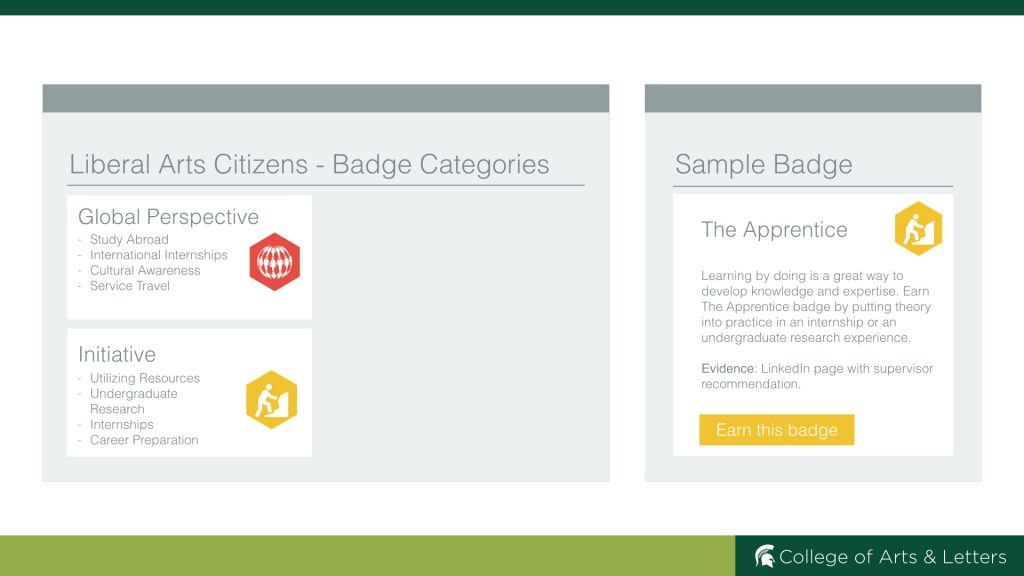
We also wanted to engage students to take initiative in their education. One way to earn the “Initiative” badge was to be an “Apprentice.” Here is how we described the Apprentice credential: “Learning by doing is a great way to develop knowledge and expertise. Earn The Apprentice badge by putting theory into practice in an internship or an undergraduate research experience.” The evidence for this badge requires students to have a supervisor write a short recommendation on the student’s LinkedIn page.

A third cultivated habit was associate with a liberal arts education is leadership. One way students could demonstrate leadership was to become more self-aware. The Self-Aware Leader badge could be earned when a student completed Strengths Finder and reviewed the results with a career adviser.
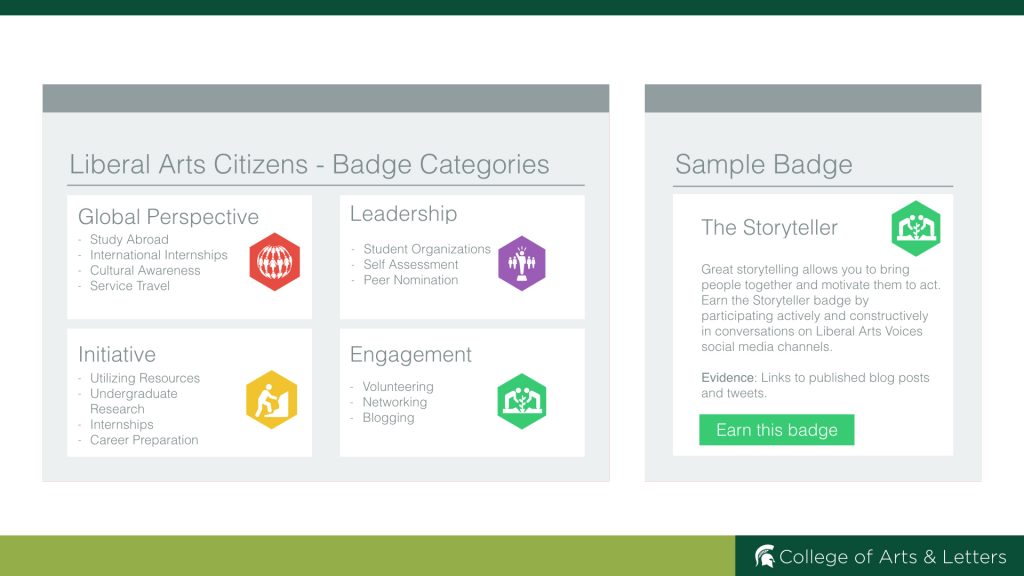
Fourth, we wanted to encourage students to be actively engaged with their own education, so we created an engagement badge. One way to earn it was to be a “Great Storyteller.” “Great storytelling allows you to bring people together and motivate them to act. Earn the Storyteller badge by participating actively and constructively in conversations on Liberal Arts Voices social media channels.”

To earn the Liberal Arts Citizen badge, students needed to complete one from each category and then two other badges from any category. We designed a number of ways to earn badges that were relatively easy and others that were more challenging, so students with varying constraints on their time and resources could complete them. For example, a student could be earn the Global Perspective badge by working with international students on campus.

As Dean of the College of Arts and Letters at Michigan State, I am a member of the Cultural Engagement Council. One of the challenges we face is to provide students with a coherent and sustained arts and culture experience throughout their time at MSU. Given the model we developed at Penn State, I thought we could create a micro credentialing system through which students could earn the MSU Arts and Culture Scholar Badge.
What follows is a prototype in development for what such a credential might include. This is still in development.
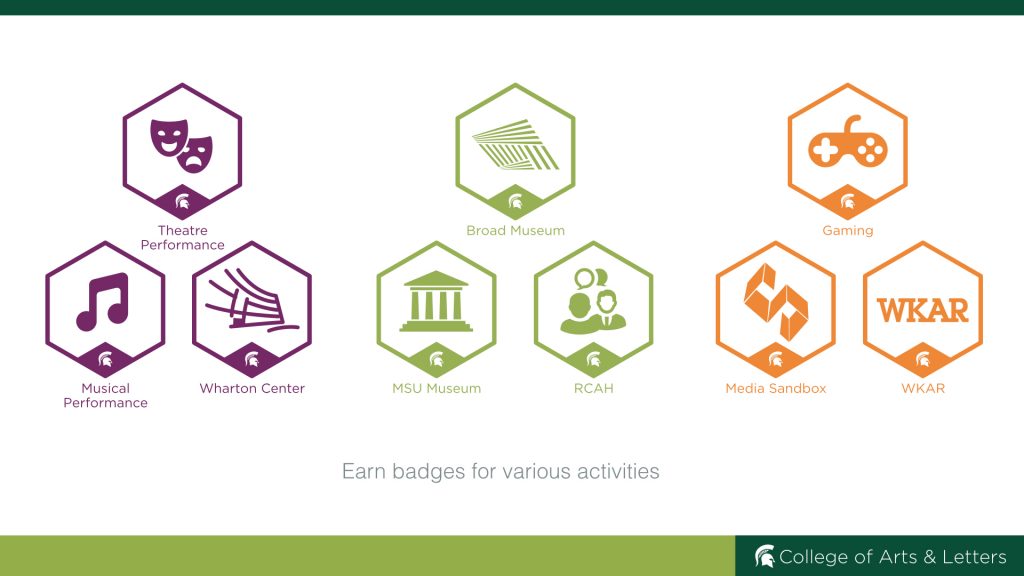
As students attend artistic performances, participate in discussion groups, enroll in our arts curriculum across the university, or visit a museum, they could earn badges if they demonstrate evidence of writing reflectively about them and thinking in a substantive way about how these experiences integrate with their majors or career goals.
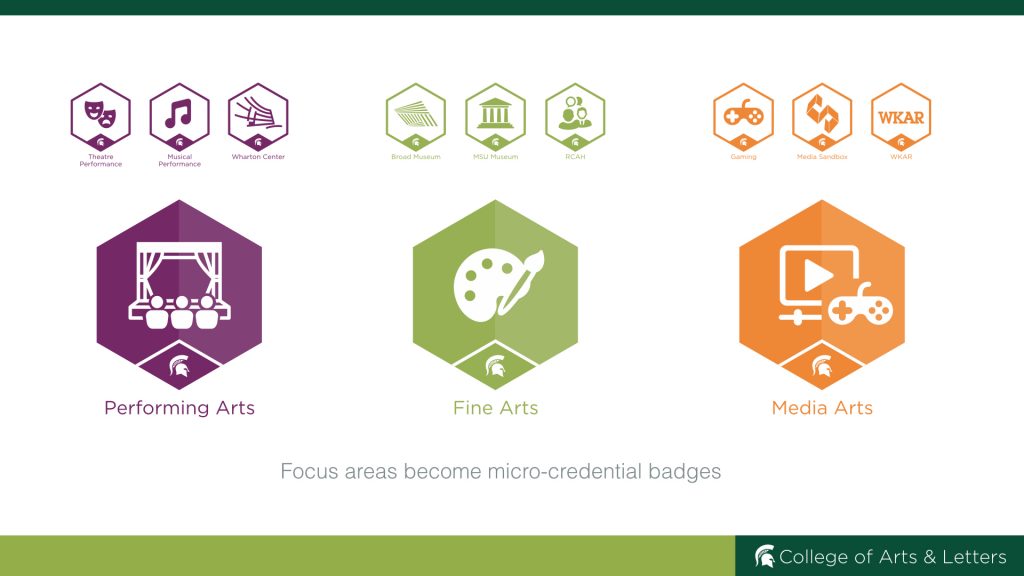
Perhaps the experiences could be organized into three broad areas: Performing Arts, Fine Arts, and Media Arts.

Then, in order to earn the macro badge as an MSU Arts and Culture Scholar, students would need to combine badges from these three broad areas and demonstrate some ability to reflect upon how their arts and culture experience at MSU fits into a broader understanding of their life goals.

We already have a badge system for our College Teaching Graduate Certificate in the College of Arts and Letters.
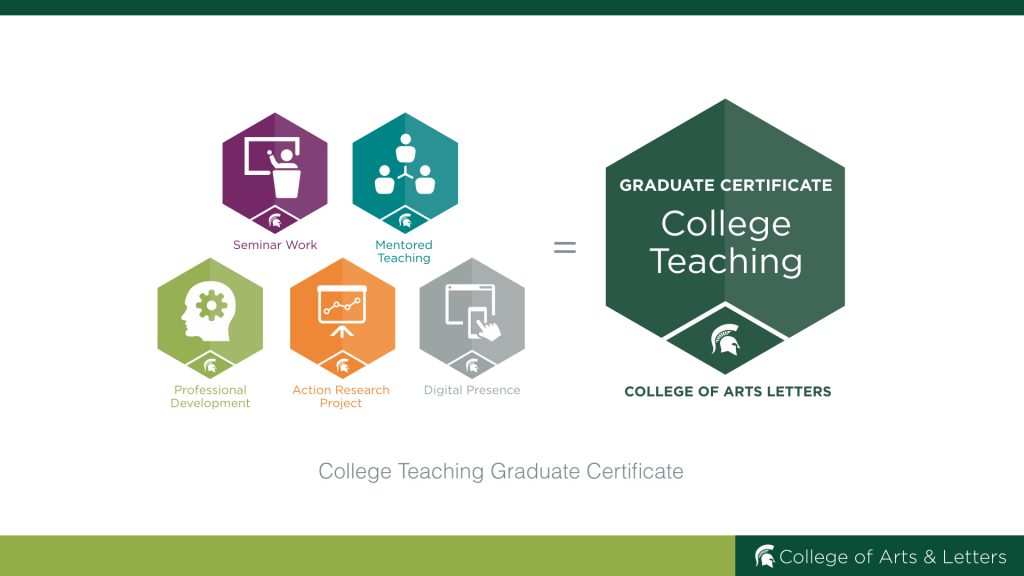
To earn this badge, graduate students need to document their developing expertise as teachers in the classroom, through mentoring and professional development, research, and by creating a digital presence that showcases their work. In addition to the badge, the Graduate School at MSU provides a certification in College Teaching that appears on a student’s transcript.
Here are the slides on SlideShare:
[slideshare id=56243566&doc=badgesatmsu-151217145805]
